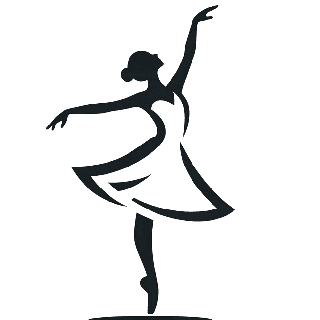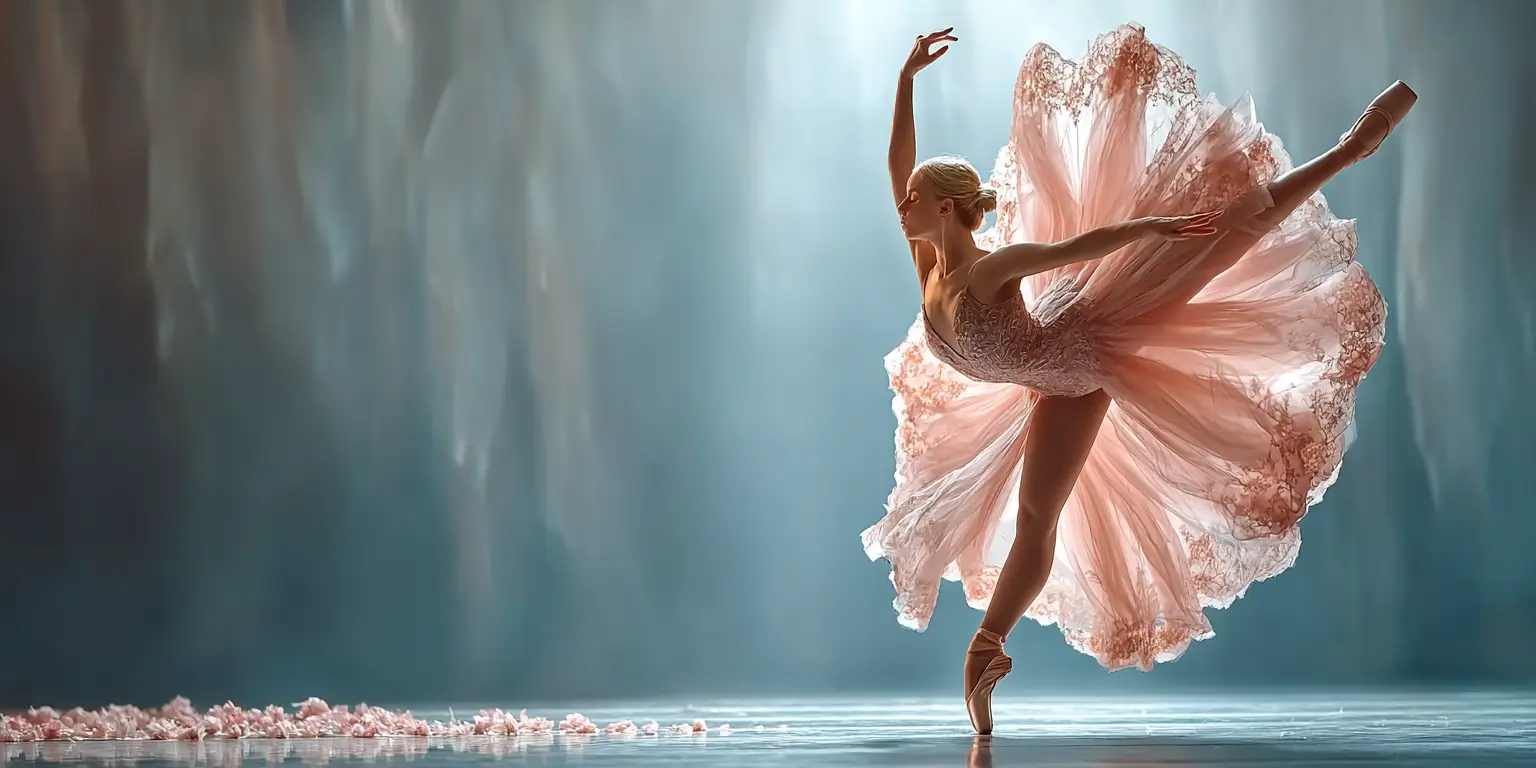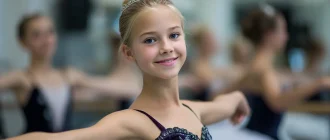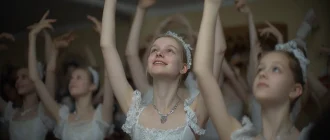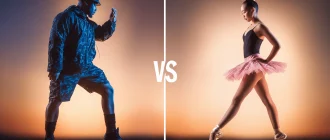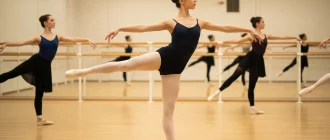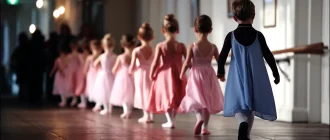Do you need to know the essential ballet equipment for a successful ballet class? This guide covers all the essentials, including ballet shoes, tights, leotards, and performance wear. Discover what every dancer needs for both practice and performance.
Graceful Insights
- Ballet shoes, including slippers and pointe shoes, provide dancers with stability, support, and performance capability, so careful selection is crucial.
- Ballet tights and leotards enhance comfort and style, greatly impacting performance and technique while allowing dancers to express their style.
- A well-prepared dance bag should include essential items like personal care supplies, stretching tools, and healthy snacks to support a dancer’s health and performance.
Ballerina Equipment Podcast
Ballet Shoes: The Foundation of Every Dancer
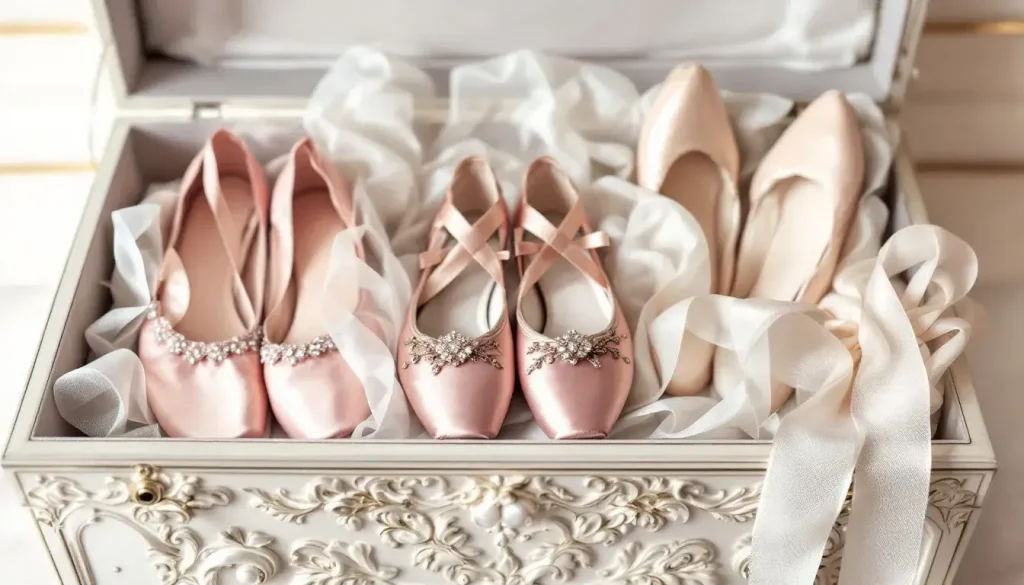
Ballet shoes are the cornerstone of every dancer’s attire. They provide the stability and support necessary for practice and performance, ensuring that dancers can execute their movements with precision and elegance. When choosing ballet shoes, it’s crucial to consider the fit, material, and style that best suits your foot shape. Leather ballet slippers, for instance, offer durability and better support, making them ideal for advanced dancers.
For many dancers, the journey begins with ballet slippers and progresses to the iconic pointe shoes. Each type of shoe serves a unique purpose and requires careful selection to match the dancer’s needs. Let’s delve into the specifics of these essential footwear choices.
Pointe Shoes
Pointe shoes symbolize a dancer’s progression and skill. These specialized ballet shoes allow dancers to perform on the tips of their toes, a technique that demands strength and precision. Advanced dancers should carefully consider the flexibility and support of their pointe shoes to ensure they can perform effectively. Many dancers use silicone or lamb’s wool inserts to enhance comfort and provide additional cushioning.
Including a small first aid kit in your dance bag can address minor injuries and prepare your feet for pointe work. Choosing the right pointe shoes and accessories can significantly impact a dancer’s performance and foot health.
Ballet Slippers
Ballet slippers are often the first shoes dancers wear, and they play a crucial role in early training. Ballet slippers must be carefully selected to ensure optimal performance, prioritizing foot shape and comfort. Properly fitted ballet slippers allow dancers to move easily and gracefully, laying the foundation for more advanced techniques.
Ballet Tights: Essential for Comfort and Performance
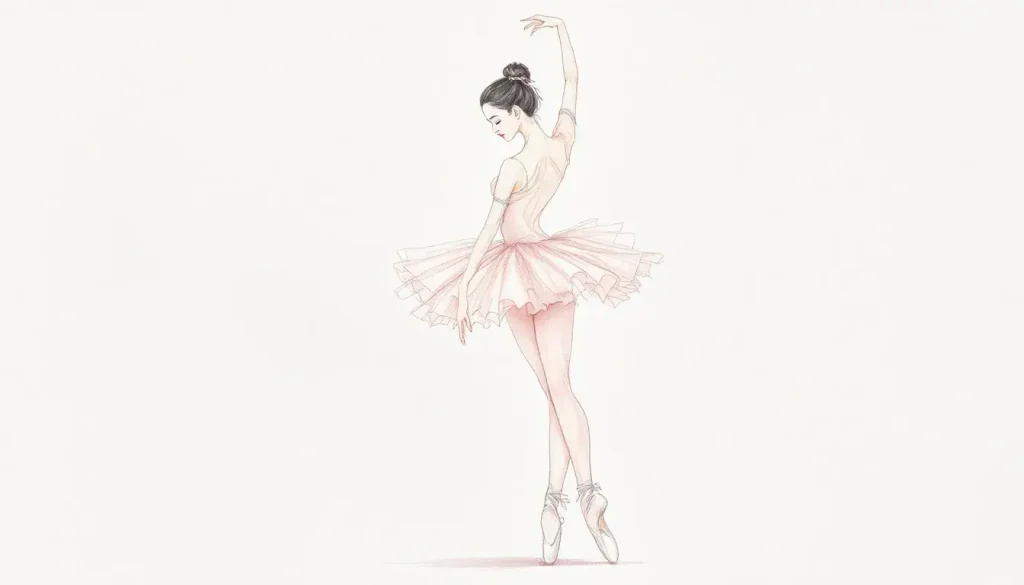
Ballet tights are more than just a part of the uniform; they are vital for enhancing a dancer’s comfort and overall performance. These tights provide the necessary support and coverage, allowing dancers to move freely while maintaining a polished appearance. The right pair of ballet tights can significantly affect both practice and stage performances.
There are several types of ballet tights, each offering unique benefits. Whether it’s the versatility of convertible tights, the sleek look of footed tights, or the freedom of footless tights, finding the right pair is essential for every dancer.
Convertible Tights
Convertible tights are a favorite among dancers for their practicality and versatility. Designed with an opening at the bottom, these tights allow dancers to transition quickly between barefoot and traditional fully covered options. This feature is particularly useful during practice or performances, enabling quick changes to accommodate different choreography.
Moreover, convertible tights aid foot care by providing coverage and protection while allowing dancers to adjust as needed. They are an essential addition to any ballerina’s wardrobe, enhancing performance and comfort.
Footed Tights
Footed tights are the go-to choice for creating a seamless and polished look. These tights cover the entire leg, providing a smooth and streamlined appearance essential for maintaining elegance on stage. By offering full coverage, footed tights help prevent distractions and ensure that dancers can focus solely on their performance.
Footed tights offer unmatched support and comfort, making them a staple in every ballet dancer’s wardrobe. Their ability to enhance the visual appeal of a dancer’s performance cannot be overstated.
Footless Tights
Footless tights are particularly popular in modern dance classes, where flexibility and freedom of movement are prioritized. These tights offer the coverage and support of traditional ballet tights while allowing dancers to perform barefoot.
This combination of coverage and freedom makes footless tights an excellent choice for various dance styles.
Leotards: Combining Style and Function
Leotards are integral to dancers’ attire, combining style and function to support their movements and technique. The fit of a leotard is crucial, as it must allow for freedom of movement while providing the necessary support. With various styles available, from classic designs to fashion-forward options, dancers can choose leotards that reflect their style and preferences.
The fabric and design of a leotard can significantly affect a dancer’s comfort and performance. Ensuring the right balance of support and flexibility allows dancers to focus on their technique and express themselves through movement.
Classic Leotards
Classic leotards are cherished for their timeless designs that emphasize a dancer’s form. These traditional leotards often feature simple cuts and elegant lines, making them a favorite among many dancers. Their straightforward design allows instructors to see the dancer’s body lines clearly, aiding in teaching proper technique.
Fashion Leotards
Fashion leotards, incorporating trendy designs and innovative materials, modernize traditional dance attire. They enhance aesthetic appeal and dancer comfort during performances. Advanced dancers often prefer fashion leotards because they provide both style and functionality.
Using innovative materials in fashion leotards ensures that dancers remain comfortable and supported, allowing them to perform at their best. These leotards are a perfect blend of style and performance, making them popular for many dancers.
Dance Bag Essentials: What Every Ballerina Should Carry
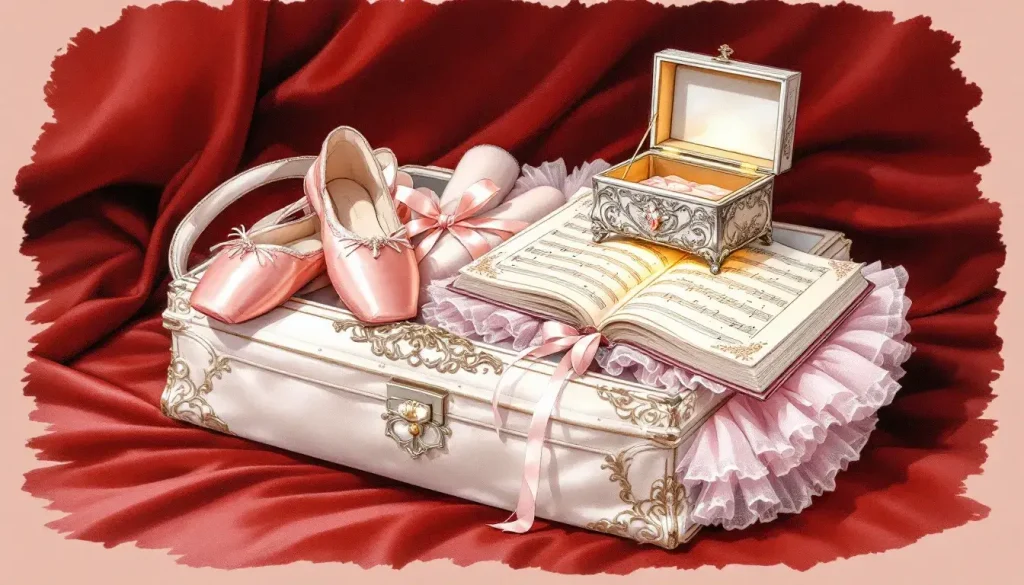
A well-organized dance bag is a dancer’s portable sanctuary, ensuring they are prepared for classes and performances. Essential items like extra tights, shoes, and a water bottle are just the beginning. Each dancer’s bag should be tailored to their needs, including items supporting their health and performance. Having the right equipment ensures a successful and comfortable ballet class experience.
Custom dance footwear is vital for protecting foot health and enhancing performance. Different foot shapes require specific ballet shoes, providing crucial support and comfort. Additionally, the fit of pointe shoes is essential for preventing injuries and maximizing control, with the box shape closely matching the dancer’s toe shape.
Hair Supplies
Hair supplies are essential for dancers to maintain neat hairstyles throughout performances and practice. A hair kit should include items like bobby pins, hair elastics, and a comb for quick touch-ups during class.
Hairpins and hairnets help secure hairstyles, keeping them intact during intense movements.
Personal Care Items
Personal care items like toe pads are essential for maintaining comfort and performance. Toe pads provide cushioning in ballet shoes, helping to minimize pain during long practices. Gel toe pads are particularly effective in protecting toes and relieving blister pain, making them a must-have in every dancer’s bag.
Snacks and Hydration
Proper hydration and energy-sustaining snacks are vital for a dancer’s endurance and performance. Carrying a reusable water bottle helps dancers stay hydrated and prevent fatigue during intense classes. Healthy snacks like energy bars and fruits are essential for maintaining energy levels during extended rehearsals.
Combining carbohydrates and protein in snacks helps sustain energy and support recovery during intensive practices. Implementing a routine of proper hydration and healthy snacking ensures that dancers can perform at their best throughout their training sessions.
Stretching and Strengthening Tools
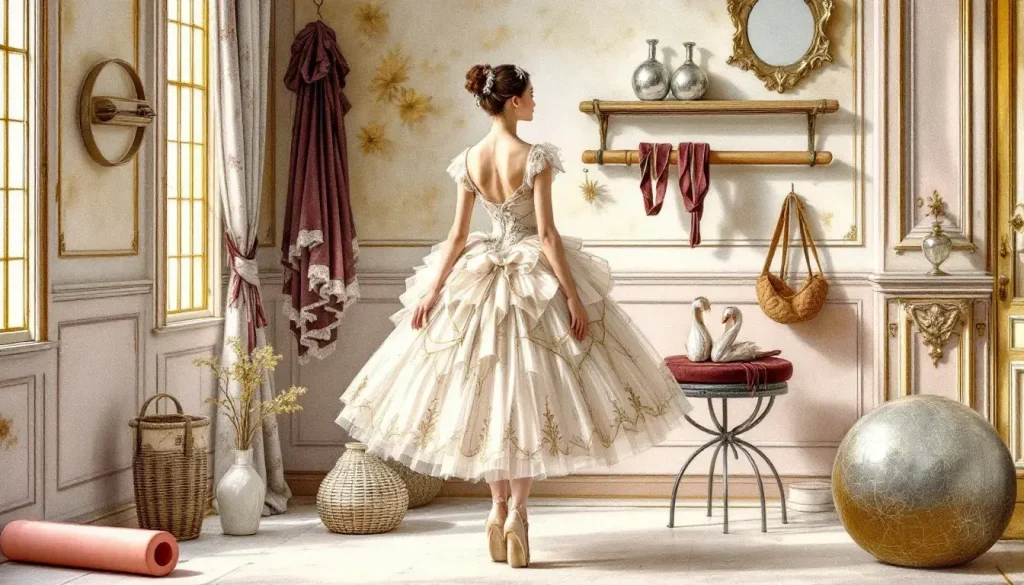
Stretching and strengthening tools are crucial for dancers to stay healthy and injury-free. These tools help improve flexibility, strength, and overall performance, making them essential to a dancer’s routine. Each tool uniquely supports a dancer’s training, from resistance bands to foam rollers.
Regularly using these tools can enhance technique and prevent injuries, allowing dancers to perform at their best. Let’s explore some of the most effective stretching and strengthening tools for dancers.
Resistance Bands
Resistance bands are versatile tools for both warm-ups and targeted strength training. They are effective for targeted muscle training and can be integrated into warm-up routines to prepare dancers for practice. They can be adjusted to provide varying resistance levels, making them suitable for progressive training across different fitness levels.
Incorporating resistance bands into a dancer’s routine can help increase flexibility, strength, and overall performance. They are a practical addition to any dancer’s dance bag, supporting various movements and training needs.
Foam Roller
Foam rollers are essential tools for muscle recovery and tension relief. By promoting blood flow and reducing muscle tension through myofascial release techniques, foam rollers help expedite recovery and enhance overall performance. These rollers are particularly useful after intense practice sessions, alleviating stress and aiding muscle recovery.
Using a foam roller regularly can significantly improve a dancer’s flexibility and help prevent injuries. Including a foam roller in your dance equipment ensures that you can maintain peak performance and recovery.
Foot Stretchers
Foot stretchers are crucial for enhancing arch flexibility and overall foot strength. Using foot stretchers regularly can improve the strength and flexibility of the arches, which is essential for ballet dancers. A well-known foot stretcher, StretchPRO, is recommended for its effectiveness in maintaining arch flexibility.
Incorporating foot stretchers into a dancer’s routine helps achieve proper technique and prevent foot injuries. They are a vital tool for maintaining foot health and performance.
Practice Equipment for Home and Studio
Dancers who aim to enhance their skills must have the right practice equipment at home and in the studio. Utilizing appropriate tools ensures that dancers can train effectively and achieve optimal performance. Each piece of equipment, from portable ballet barres to workout mats, plays a crucial role in a dancer’s training.
Investing in quality practice equipment allows dancers to practice positions and stretches in various environments, ensuring they can maintain their training regimen regardless of location.
Portable Ballet Barre
A portable ballet barre is an essential tool for dancers, providing stability and support for various exercises. The preferred type is the double barre, which offers enhanced stability and support for different exercises. The price range for a portable ballet barre typically starts at $100 and can vary based on the quality and brand.
Having a portable ballet barre allows dancers to practice positions and stretches in various environments, enhancing their training flexibility and convenience.
Workout Mat
A workout mat is essential for preventing injury and providing comfort during dance exercises. It can also enhance grip and safety during stretching and floor exercises, ensuring dancers practice effectively without risking injury.
A quality workout mat is a must-have in any dancer’s training equipment.
Mirrors and Flooring
Mirrors are crucial in dance practice because they provide immediate visual feedback to dancers about their form and technique. By allowing dancers to see their movements, mirrors help correct posture and enhance overall performance. This feedback is essential for dancers to make necessary adjustments and achieve proper alignment and technique.
Sprung floors absorb shock, minimizing the impact on a dancer’s joints during practice. Using a sprung floor aids in injury prevention, allowing dancers to perform more safely and effectively.
Mirrors and proper flooring are essential components of a dancer’s practice environment.
Performance Wear and Accessories
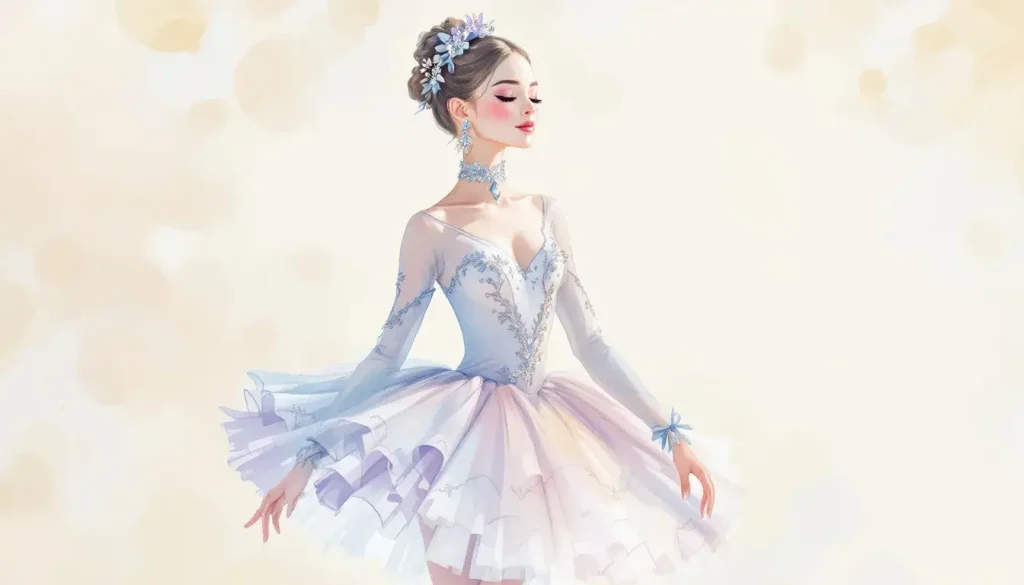
Performance wear should balance style and practicality to enhance a dancer’s presentation on stage. It combines comfort and visual appeal, essential for improving movement and ensuring dancers feel confident while performing. Each item, from ballet skirts to warm-up gear and performance makeup, is vital in a dancer’s stage presence.
A well-rounded performance wardrobe allows dancers to focus on their craft, knowing that their attire supports their movements and enhances their overall performance. Let’s explore the key components of performance wear and accessories that every dancer should have.
Ballet Skirts
Ballet skirts come in various styles, each offering unique aesthetic and functional qualities. Wrap skirts are popular for their adjustability, allowing dancers to customize their fit and comfort. Tutu skirts add dramatic flair to performances, enhancing the visual impact of the choreography. A ballet skirt can also be a versatile addition to a dancer’s wardrobe.
Straight skirts are longer and create a beautiful line when paired with leotards. Ballet skirts can help dancers regulate their warmth and comfort while practicing specific movements during class. They also allow instructors to see the lines and positions of the dancers’ legs, aiding in teaching proper technique.
Warm-Up Gear
Legwarmers and wrap sweaters are crucial for maintaining muscle warmth and flexibility during rehearsals and performances. These items help prevent injuries by keeping muscles warm and ready for dance demands. Legwarmers and wrap sweaters are essential warm-up items that help maintain muscle temperature and flexibility before dancing.
Proper warm-up gear ensures that dancers can perform at their best, reduces the risk of injury, and enhances overall performance. Including these items in your dance bag is vital for a successful and safe dance routine.
Performance Makeup
Stage makeup is specifically formulated to resist sweat and bright stage lights, ensuring lasting wear throughout a performance. It must also be durable enough to withstand intense lighting and long durations, ensuring dancers appear vibrant and expressive.
Proper stage makeup is essential for maintaining a polished appearance during performances, allowing dancers to focus on their motion and expression.
| Equipment | Purpose | Key Features to Look For |
|---|---|---|
| Pointe Shoes | Enable dancing en pointe with support and precision | Proper fit, shank strength, box shape, breathable material |
| Leotard | Core practice and performance wear | Comfortable stretch fabric, secure fit, flattering cut |
| Ballet Tights | Smooth leg line, warmth, and muscle support | Seamless finish, durable stretch, moisture-wicking |
| Ballet Slippers | Flexibility and foot articulation for class work | Leather or canvas, split-sole or full-sole, snug fit |
| Leg Warmers | Keep muscles warm to prevent injury | Breathable knit, non-slip fit, lightweight warmth |
| Ballet Skirt or Wrap | Adds flow and style for rehearsals | Lightweight chiffon, adjustable tie, free movement |
| Dance Bag | Organizes and protects all gear | Multiple compartments, ventilated shoe pocket, durable fabric |
Resume
In conclusion, every ballet dancer must have the right equipment, from foundational ballet shoes to performance wear and accessories. Each item enhances comfort, performance, and safety, allowing dancers to focus on their technique and artistry. Whether it’s the versatility of convertible tights, the durability of footed tights, or the freedom of footless tights, each type of ballet tight serves a unique purpose.
Investing in quality dance equipment can prepare dancers for every class and performance. Remember, the right tools enhance performance and support a dancer’s well-being and success. Keep your dance bag well-stocked with the essentials, and you’ll be ready to shine on stage and in the studio.
